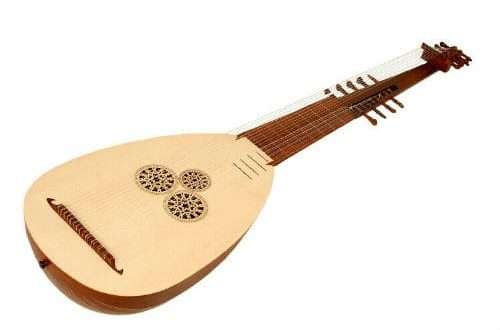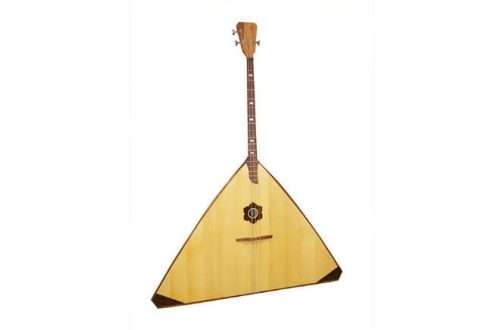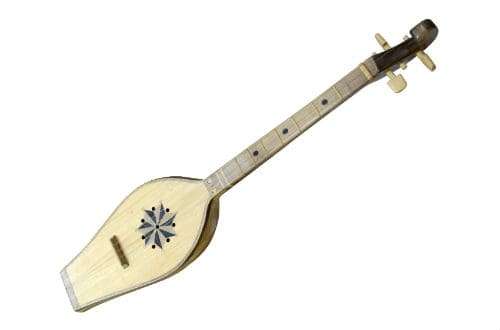
Ukulele: what is it, types, structure, sound, history, application
Contents
One of the main attractions of Hawaii is a small, funny looking guitar. Despite the toy appearance, the musical instrument with the wonderful name ukulele is popular with famous and novice musicians. It is compact, easy to learn, and its bright, cheerful, romantic sound is reminiscent of the tropical Pacific islands.
What is a ukulele
This is the name of a genus of guitar – a stringed plucked instrument with 4 strings. The main application is the musical accompaniment of vocals and solo playing.
The sound of the ukulele is ideal for playing Hawaiian folk songs, jazz and folk songs, country music and reggae.
History is a ukulele
The history of the origin of the small guitar is short, but the original instrument managed to fall in love with musicians over a relatively short period of existence. The ukulele is considered a Hawaiian invention, although in reality the Portuguese are to be thanked for its origin.
Supposedly in 1875, four Portuguese, dreaming of building a better life, immigrated to the Hawaiian Islands. Friends – Jose Santo, Augusto Diaz, Joao Fernandez, Manuel Nunez – took with them a Portuguese 5-string guitar – braginya, which became the basis for creating a ukulele.
In exile, friends engaged in the production of wooden furniture. However, the local population did not like the products produced, and the Portuguese, in order not to go bankrupt, began to make musical instruments. They experimented with the shape and sound of the Portuguese guitar, resulting in a miniature variety with a rich and lively sound. The number of strings has decreased – now there were four, not five.
The Hawaiians coldly accepted the invention of the Portuguese. But their attitude changed when, at one of the national festivities, the Hawaiian king David Kalakaua decided to play a small guitar. The ruler fell in love with a wonderful instrument, ordered to make it part of the Hawaiian national orchestra.
The name of the instrument is of Hawaiian origin. The word “ukulele” is translated as “jumping flea”, and if you break it into two parts – “uku” and “lele”, you get the phrase “come gratitude”.
There are three suggestions why the ukulele became so called:
- The Hawaiians who saw the guitar for the first time thought that the guitarist’s fingers running along the strings resembled jumping fleas.
- The royal chamberlain in Hawaii was an Englishman, Edward Purvis, a short, nimble, and restless man. Playing a small guitar, he played funny and clown, and he was nicknamed the ukulele.
- Hawaiian Queen Lydia Kamakaea Paki called the gift given by four Portuguese emigrants to the Hawaiian people a “thankfulness that came”.
Types
Ukuleles come in a variety of shapes and sizes. The instrument may look like a miniature copy of a classical guitar, and craftsmen also create round, oval products that resemble the shape of pumpkins and pineapples, and even square ones.
The sound depends on the size of the instrument. On a larger copy, you can play the notes below. Ukuleles are divided into several types by size:
- Soprano is the most popular variety. Classical ukulele with 12-14 frets.
- The concert type is slightly larger and louder than the soprano type. Frets are also 12-14.
- The tenor is a popular variant commercially available in the 1920s, with a thick, velvety tone and many shades. Frets 15-20.
- The baritone is another popular type that began to be sold in the 1940s. Produces a deeper, richer, more resonant sound. Frets, like a tenor guitar, 15-20.
- Less common options that appeared after 2007 are bass, double bass and piccolo.
There is a version of the ukulele with double strings. Each string is bonded to the second string, which is tuned in unison.
What does a ukulele sound like?
The ukulele sounds light, bright, its sounds radiate energy and optimism, evoke memories of a sunny archipelago in the Pacific Ocean, of colorful bouquets of Hawaiian flowers.
An open string sound is called tuning. They select such a system so that the extraction of the most used chords is convenient. Ukulele tuning is atypical for a guitar, its characteristics are given below.
Standard ukulele tuning is soprano. The string names are as follows:
- salt (G);
- to (C);
- my (E);
- la (A).
String enumeration goes from four to one (top to bottom). C-Ea (CEA) string tuning, as for a classical guitar, that is, the beginning is a high note, the end is low. The G string should sound higher than the 3nd and XNUMXrd because it belongs to the octave that the other XNUMX notes belong to.
The advantage of this tuning is the ability to play the same melodies that are available for playing on a classical guitar, starting from the 5th fret. For musicians who are accustomed to playing the guitar, playing music on the ukulele may seem uncomfortable at first. But addiction comes quickly. Extraction of individual chords is available with one or two fingers.
The shortened neck of the ukulele allows the instrument to be freely tuned to the desired tuning. It is possible to make a standard guitar tuning, in which the sound will correspond to the first four strings of a classical guitar. That is, it turns out:
- my (E);
- you (B);
- salt (G);
- re (D).
For the ukulele, the technique of playing is brute force and fight. They pluck and strike the strings either with the fingers of the right hand or with a plectrum.
Structure
The structure of the ukulele is almost the same as that of the guitar. The ukulele must consist of:
- wooden, empty inside the body with a tailpiece and a round hole in the front soundboard;
- neck – a long wooden plate along which strings are stretched;
- fingerboard overlays;
- frets – fingerboard segments delimited by metal protrusions (the order of notes is determined by the location of the frets for each of the 4 strings);
- heads – the final part of the neck with pegs;
- strings (usually made of nylon).
Ukuleles are made from acacia, maple, ash, walnut, spruce, rosewood. Cheaper copies are made of plastic, but such analogues may not sound better than wooden originals. The neck is machined from a single plate, and hardwood is used. The guitar stand is made of plastic or wood.
Tool dimensions
The difference in size of ukulele of different sound:
- soprano – 53 cm;
- concert – 58 cm;
- tenor – 66 cm;
- baritone and bass – 76 cm.
The largest copy of the ukulele, which is 3 m 99 cm long, was created by the American Lawrence Stump. The product, listed in the Guinness Book of Records, is working, you can play on it.
Famous Performers
The ukulele has long ceased to be a local Hawaiian instrument, now it is a popular and appreciated guitar by musicians. Many eminent guitarists fell in love with a miniature instrument, used it at concerts, thereby contributing to its popularization.
The most famous ukulele player is Hawaiian guitarist Israel Kaanoi Kamakawiwoole. He became interested in guitar music from early childhood, in the Hawaiian Islands he is a big celebrity, the people affectionately call him “gentle giant”.
Hawaiians also consider Eddie Kamae and Gabby Pahinui, who created the musical group The Sons of Hawaii, to be local stars. They make patriotic and inspiring guitar music with the inclusion of national motifs.
Of the great admirers of the ukulele should be called:
- jazz musician Laila Ritz;
- English comic actor and singer George Formby;
- American guitarist Roy Smeck;
- American actor Cliff Edwards;
- traveling musician Rocky Leon;
- virtuoso guitarist Jake Shimabukuro;
- Canadian techno musician James Hill.
The ukulele is a wonderful instrument that has become popular not only for its bright and positive sound, but also for its compactness. It can be taken on a trip, on a visit, to an event – everywhere the musician creates a festive mood by playing the ukulele.





